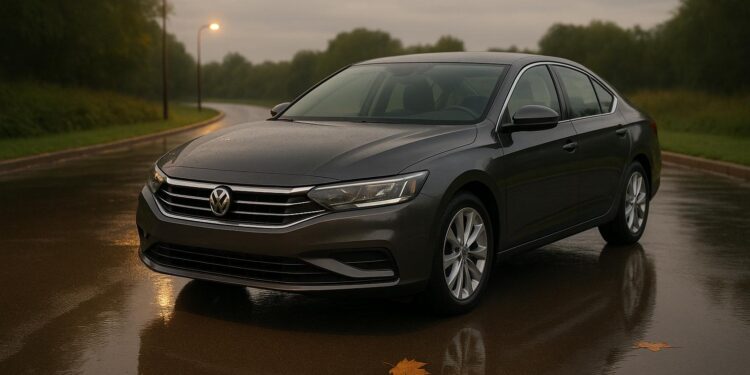Driving in Uganda presents unique challenges due to heavy rain, dusty conditions, and poor road quality. These factors can damage your car’s exterior, interior, and mechanical systems. Here’s a quick guide to keeping your vehicle in good shape:
- Rain Protection: Use waterproof car covers and ceramic coatings to prevent rust and moisture damage.
- Dust Defense: Regularly clean and replace air filters, and use UV-blocking dashboard protectants inside the car.
- Pothole Safety: Maintain proper tire pressure and drive cautiously to minimize suspension damage.
Cars in poor mechanical condition contribute to rising accidents – Police
Car Covers and Protective Coatings for Weather Protection
Pairing a car cover with protective coatings can provide solid defense against rain, dust, and UV damage. These methods work hand-in-hand with other strategies discussed later.
How to Choose the Right Car Cover
During rainy seasons, waterproof car covers are a must. Opt for multi-layer designs featuring a waterproof membrane. The outer layer keeps water out, while the inner breathable layer minimizes moisture buildup. Covers with taped seams add an extra layer of protection to prevent water from seeping through.
For sun and dust protection, go for a well-fitting, breathable cover that includes UV inhibitors. Lighter-colored covers can reflect heat, helping to keep your car’s interior cooler. Features like elastic hems, drawstring closures, and reinforced grommets for tie-down straps ensure a snug fit, which helps block out fine dust particles.
How to Apply Protective Coatings
Ceramic coatings create a hard, glass-like layer on your car’s surface, repelling water and making cleaning easier. High-grade ceramic coatings are long-lasting, often providing years of protection. For the best results, apply the coating to a clean, dry surface and allow it to cure properly. Before application, use a clay bar to remove contaminants from the paint.
For a more budget-friendly option, consider wax coatings. Carnauba wax offers temporary water and UV protection while delivering a rich shine. Synthetic waxes last longer but may not provide the same visual depth as natural waxes.
Don’t forget about the undercarriage. Rubberized undercoating sprays can protect against moisture and road salt, which is especially helpful in areas where road salt and debris are common. Apply these sprays to clean, rust-free surfaces for the best results. Additionally, paint protection films can shield high-impact areas like the front bumper, hood, and side mirrors from minor damage like stone chips, all while remaining nearly invisible.
Car Cover Materials Comparison
Here’s a quick look at how different materials stack up:
| Material | Durability | Water Resistance | UV Protection | Best For |
|---|---|---|---|---|
| Polyester | Moderate | Performs well with a coating | High | General all-weather protection |
| PVC | Moderate | Excellent in heavy rain conditions | Adequate | Areas with frequent rainfall |
| Canvas | High | May need occasional waterproofing | Good | Long-term outdoor storage (with care) |
| Polypropylene | Moderate | Good | High | Regions with strong UV exposure |
| Multi-layer Fabric | High | Excellent | Excellent | Premium, all-around protection |
Polyester covers are a practical and affordable choice for most drivers. PVC covers excel in wet conditions but lack breathability, making them better for short-term use. Canvas covers offer excellent durability but require regular maintenance, while multi-layer fabrics deliver top-tier protection in a variety of conditions.
Tire Care and Pothole Protection
Taking care of your tires and keeping an eye on their pressure isn’t just about extending their life – it’s also about staying safe, especially when navigating bumpy, pothole-filled roads.
How to Manage Tire Pressure
Make it a habit to check your tire pressure every month. Do this when the tires are cold (meaning the car hasn’t been driven for a few hours) for the most accurate reading. Use the pressure level recommended by your vehicle’s manufacturer, usually listed on the sticker inside the driver’s door or in the owner’s manual – this is typically between 32 and 35 psi.
If you’re driving on roads riddled with potholes, consider increasing the pressure slightly. This helps stiffen the tire sidewalls, which can reduce the chances of damage from sharp impacts. Keeping your tires in good shape and properly inflated ensures a safer, smoother ride, even on the roughest roads.
sbb-itb-7bab64a
Driving Techniques to Protect Your Suspension
Protecting your car’s suspension isn’t just about tire maintenance – it’s also about how you drive. On roads riddled with potholes, adopting careful driving habits can make a big difference. Slowing down and driving defensively can help reduce the impact potholes have on your vehicle.
How to Drive on Roads with Potholes
- Slow down and stay vigilant: Lower your speed when approaching potholes to reduce the strain on your suspension.
- Steer carefully: Navigate around potholes when possible, or drive through them cautiously if avoidance isn’t an option.
- Daylight driving: Whenever possible, drive during daylight hours to better spot potholes and avoid unnecessary damage.
These simple adjustments can help protect your suspension. Be especially cautious with water-filled potholes, as they can conceal their depth and size.
Pothole Damage Prevention Tip for Rainy Conditions
Rainy weather adds extra challenges, as water-filled potholes can be deceptive. As Dr. Jimmy Spire Ssentongo humorously remarked, "That is not a pothole! That is a pond!". Keep this in mind and approach such hazards with extra care to avoid unnecessary damage.
Protecting Interior and Air Filters from Dust
Dust can wreak havoc on both your vehicle’s interior comfort and engine efficiency. Inside the cabin, it lowers air quality, making your driving experience less pleasant. In the engine compartment, it can interfere with performance by contaminating critical components. That’s why your car is equipped with two essential filters: the cabin air filter, typically located behind the glove box or under the dashboard, and the engine air filter, which keeps dust out of the combustion chambers.
Taking steps to prevent dust buildup not only helps maintain cleaner air inside the vehicle but also ensures your engine runs smoothly. A little attention to these filters can go a long way in managing dust both inside and outside your car.
How to Keep Cabin Air Clean
To improve air quality inside the cabin, consider installing a HEPA filter. These filters are designed to trap a high percentage of fine particles, making them highly effective against dust. Along with upgrading your filter, make it a habit to clean interior surfaces regularly. Use a microfiber cloth to wipe down the dashboard, door panels, and center console – this helps capture and remove dust without spreading it around.
For added protection, apply a UV-blocking dashboard protectant. Not only does it help repel dust, but it also preserves the lifespan of plastic surfaces by preventing sun damage.
Air Filter Replacement and Care
Keeping your filters in good condition is crucial for both cabin comfort and engine health. Replace your cabin and engine air filters according to your vehicle manufacturer’s recommendations – usually every 12,000 to 15,000 miles. If you frequently drive in dusty conditions, you may need to replace them more often, especially if you notice reduced airflow or unusual odors.
To check if your filters need replacing, hold them up to a light source. If light doesn’t pass through easily, it’s time for a change. For reusable filters, follow the manufacturer’s cleaning instructions to ensure they remain effective.
When installing new filters, pay attention to the directional arrows printed on them. These arrows indicate the correct airflow direction, and aligning them properly is essential for optimal filtration.
If you want even better dust protection, consider upgrading to electrostatic filters. These filters use static electricity to attract and trap particles, offering improved dust capture while maintaining good airflow. While they may cost more than standard filters, they can be a worthwhile investment for cleaner air and better vehicle performance.
Taking care of your filters on schedule not only improves air quality and engine efficiency but also helps extend the life of your vehicle.
Conclusion: Long-Term Car Protection
Keeping your car in top shape against challenges like rain, dust, and potholes takes a mix of the right tools, regular upkeep, and mindful driving. Weather-resistant car covers and protective coatings act as your car’s armor against harsh elements, while maintaining proper tire pressure and care ensures safer handling on rough roads.
Your driving habits also play a big role in protecting your vehicle. Techniques like slowing down before hitting potholes, keeping a safe distance from other cars, and staying alert for road hazards can help preserve your car’s suspension system and save you from expensive repair bills. It’s a simple truth: preventing damage is always cheaper than fixing it.
Don’t overlook your air filters, either. Clean cabin and engine air filters are essential for maintaining engine performance and ensuring a comfortable ride. If you’re driving in particularly dusty areas, upgrading to electrostatic filters could provide extra protection.
FAQs
How can I choose a car cover that protects against rain and dust without trapping moisture underneath?
To shield your car from rain and dust while avoiding moisture buildup, choose a breathable car cover made from materials like cotton blends or specially designed fabrics. These materials let condensation escape, helping to prevent mold or mildew from forming.
Ensure the cover fits your car snugly and secure it using tie-downs or grommets. This keeps the cover in place, even on windy days, and avoids moisture being trapped underneath. A properly fitted, breathable cover keeps your car dry and safe, no matter the weather.
How can I tell if my car’s air filter needs to be replaced, especially when driving in dusty areas?
Driving through dusty conditions can make your car’s air filter clog up faster than usual. While air filters are generally replaced every 12,000 to 15,000 miles or about once a year, dusty environments might require more frequent changes.
Pay attention to warning signs like sluggish engine performance, a drop in fuel efficiency, or even a musty odor inside the car. You can also take a quick look at the filter – if it looks dirty or clogged, it’s time to swap it out. Keeping an eye on your air filter not only helps your car run smoothly but also protects the engine from potential damage.
How can I protect my car’s suspension when driving over potholes?
To keep your car’s suspension in good shape when dealing with potholes, reduce your speed before hitting them. Slamming on the brakes at the last second can actually increase the force of the impact on your suspension system. If you notice a pothole ahead, try to steer around it, but only if it’s safe and won’t put you or others at risk. Driving slower gives your suspension a better chance to absorb the shock without taking unnecessary damage.
Another key tip: make sure your tires are properly inflated and aligned. This helps spread out the force of the impact, reducing strain on your suspension. And don’t skip regular maintenance – keeping your suspension system in top condition ensures it’s ready to handle rough roads when they come your way.
Related posts
- 8 Essential Car Maintenance Tips for Uganda’s Climate
- Common Car Problems in Uganda: Solutions Guide
- How to Save Money on Used Car Maintenance
- Common Car Issues in Uganda’s Used Market




